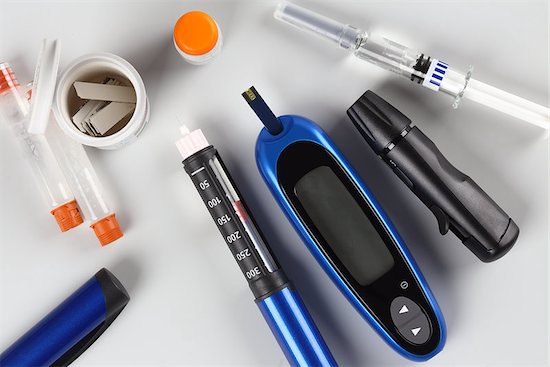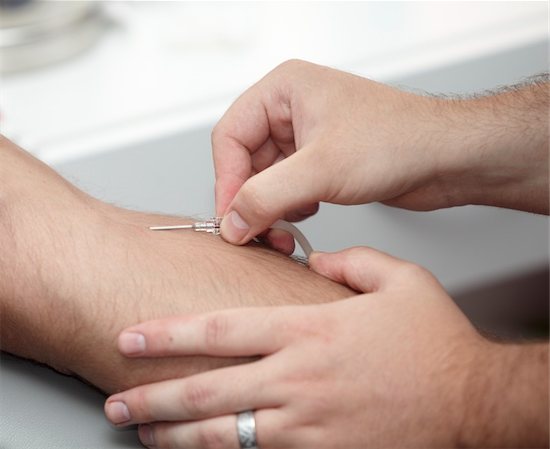Posts tagged HIV statistics

Diabetes Risk: HIV Patients Have a Higher Risk
Patients with HIV are always at risk. They are left vulnerable to infections and other comorbidities due to the virus attacking their immune system. Scientists were startled when they made the revelation that HIV patients had a 4 percent higher risk of developing diabetes. This discovery was made in a recent study published in the BMJ Open Diabetes Research & Care online journal.
Despite Low Obesity Rates, Diabetes Risk Persist
Obesity is a key indicator of diabetes. However, many patients with HIV do not have obesity, a fact leaving scientist confused. To find out just how prevalent diabetes is among the HIV population, researchers launched a probe into two sets of data from 2009-2010.
They analyzed a survey of 8,610 HIV-positive individuals in the Medical Monitoring Project (MMP) and another survey of 5,064 people without the disease who participated in the annual National Health and Nutrition Examination Survey (NHANES). Comparing these two sets of data would give them insights into the diabetes risk of those with and without HIV.
Here is the breakdown of what the researchers found:
- One in 10 HIV patients had diabetes.
- 4% of those with diabetes had type 1.
- Over of those with diabetes had type 2.
- 44% of HIV patients had and unspecified strain.
- Over 8% of the general population had diabetes.
- The occurrence of diabetes was 3.8% higher in HIV patients.
This study was able to show that HIV patients are at risk. However, since the research was purely observational, scientists were not able to make a definitive conclusion as to why. They know that obesity is still a risk factor, but due to its high absence in individuals with HIV, they have to think differently.
The researchers had this to say: “Additional research would help to determine whether [diabetes] screening guidelines should be modified to include HIV infection as a risk factor for [the condition], and to identify optimal management strategies in this population.”

Heart Attack: HIV Patients at Nearly Double the Risk
Other than the brain, the heart is one of the most important organs in our body. It happens to also be a target for viruses like HIV. HIV positive individuals need to take caution and check on their heart regularly. A study shows that the risk for heart attack is much greater in those troubled by this disease.
Predicting Heart Attack Risk
The heart is vulnerable in America. At least, that is what the statistics say. Here are the facts that the CDC found:
- Every 43 seconds, someone in the United States has a heart attack.
- Every year, 735,000 Americans have a heart attack.
- Of those American, 525,00 are experiencing their first attack and 210,000 have experienced one before.
- One of 5 heart attacks is silent. This means that the patient is not aware it is happening but still suffers damage to the body.
These are truly awful facts. But what the scientists at the Northwestern University Feinberg School of Medicine have found may spell worse trouble for HIV patients. They are almost twice as likely to suffer from a heart attack, which more than what physicians have predicted for the general population.
Predicting the risk of heart attack is important. If a doctor discovers it early on, they can prescribe the right medicine to lower the risk. “If you have a higher risk for heart attack or stroke, your ability to benefit from one of these drugs is greater and justifies the possible side effects of a medication,” says Dr. Matthew Feinstein, cardiovascular disease fellow at Northwestern University.
Dr. Feinstein goes on to state that HIV increases heart risk by causing chronic inflammation, which can lead to plaque buildup in the body’s tissue. Eventually, this series of events in your body can lead to heart attack or stroke.
The current predictor tools for heart risk need to be adjusted. Heart medications are only given to those in serious need. If physicians cannot accurately tell if HIV patients need those medications, this will lead to dangerous consequences.

Better Model Used to Further Development of HIV Vaccine
One of the best ways to stop the spread of disease is through vaccines. This long-used defense has halted numerous and dangerous infections over the years. It is no wonder then that scientists are urgently searching for ways to develop an HIV vaccine. A number of factors present obstacles that have, so far, stood in the way of progress.
3 Struggles in the Search for a HIV Vaccine
The menacing virus is an elusive microbe that evades detection both from the human immune system and most HIV vaccine models tested against it. What makes the virus so effective is the ability it has to mutate, which happen rapidly. Vaccines generally work by using non-infectious material and introducing it into the body where the immune system can identify and then attack it. The quickly changing virus means that a lesser amount of the virus is actually found and eliminated.
Another factor that gets in the way is the design of the HIV itself. The virus is packed into a type of envelope, which is coated with sugars that come from the host. Because this is on the outside of the microbe, it makes it difficult for the immune cells to identify it as an intruder.
A third issue in the mix is the lack of a living model that researchers can use to test potential HIV vaccines. This last obstacle has limited progress the most. Recent developments may finally change that.
A team of researchers has found that a certain species of primates has an immune system that closely resembles that of the human immune system. In order to be able to use this to their advantage, a virus that resembled HIV but that could infect the animal, had to be developed. The researchers, with some trial and error, were able to accomplish this. The result is a virus that infects and creates AIDS-like symptoms in the host animal. With a better model to test vaccines and monitor the viral envelope, they are hopeful to speed up HIV vaccine research and development.
HIV Treatment Funding Is Out of Reach for Countries in Need
The battle against HIV has come a long way. Those living with the infection benefit from therapies now available. One of these benefits is a longer life expectancy. Worldwide, these implemented treatments not only improve quality and quantity of life, but it also limits the spread of the disease. Unfortunately, longer life equals more expense in lifetime treatment costs, which underdeveloped nations cannot support.
In spite of the good things being accomplished, the cost of maintaining what had been put into effect is already high and is increasing. Some of the countries hardest hit by HIV will experience the biggest cuts in funding. For these areas, future long-term care could be compromised. In Sub-Saharan Africa, home to some of the countries with the highest cases of HIV infections, studies were done to determine the cost of long-term therapy. The numbers are staggering. In order to maintain current treatment, account for new cases, and continue with prevention plans through the year 2050, it is estimated to cost over $260 billion. It’s a figure African countries simply can’t sustain.
Some Countries with the Greatest Need Have the Least Resources
The areas that were investigated are the ones that account for well over two-thirds of HIV infections in all of Africa. These nations do not have the resources to continue to provide necessary and ongoing care for HIV patients. Experts feel it’s vital to collect the needed funding now to ensure it is there for the future. Otherwise, lack of funds for treatment could lead to an increased prevalence of AIDS, as well as an increase in the spread of HIV.
As previously mentioned, long-term care is important for each individual who is HIV-positive. Part of the treatments include inhibiting the transfer of the virus. Stopping the spread of the disease is vital. Researchers emphasized the need for continued support in the fight against HIV, not only for the financial reasons but the moral ones as well. With so many people able to have a relatively healthy and normal life because of current plans in place, their lives are dependent on continued care and the funding that backs it.
HIV Prevention in Adolescents Faces Legal Barriers
Laws vary from state to state regarding parental consent when it comes to medical treatment for adolescents. This in itself is not a bad thing as parents have defined rights when it comes to their children’s health. However, when it comes to HIV prevention and research, these laws could pose a public health issue. For some regions, lines are blurred between what constitutes treatment or therapy, and prevention (particularly for HIV and other STDs), and what types of rights adolescents have when it comes to these matters.
Studies are conclusive when it comes to the number of young adults contracting HIV. The facts are:
- The second largest at-risk population are individuals aged 13 to 24.
- Of the new infections reported in the United States, researchers found 23% are in this age group.
- Out of that number, over 70% are young gay and bisexual men.
- This high-risk group would greatly benefit from certain preventative measures, such as safer sex practices, and using antiretroviral therapies for those who are not HIV-positive.
This latter method has been shown to greatly reduce the risk of contracting the virus. Not only would these measures aid young persons who are at the highest risk of transmitting and contracting the virus, but it could also help stem the growing tide of HIV outbreaks.
What Can Aid Prevention in Adolescents?
The ethical side is clear, and poses no threat. The legalities are what stand in the way. Each state has different laws governing parental consent. Most of these hinge on treatment, not necessarily prevention. It would essentially clear the roadblock if lawmakers and health officials collaborated, amending certain laws to allow for prevention of HIV and other sexually transmitted infections in minors without parental consent.
Another approach is to create clear legal boundaries between treatment and prevention. This could help in areas where laws are not clear-cut, yet tie the hands of healthcare workers as far as aiding the younger population in preventative care. Lastly, having a consistent law code in this regard would also help assure that this particular type of care could be given and received anywhere within the US.



